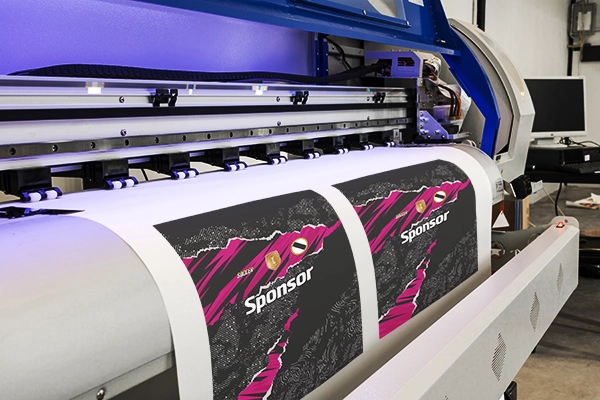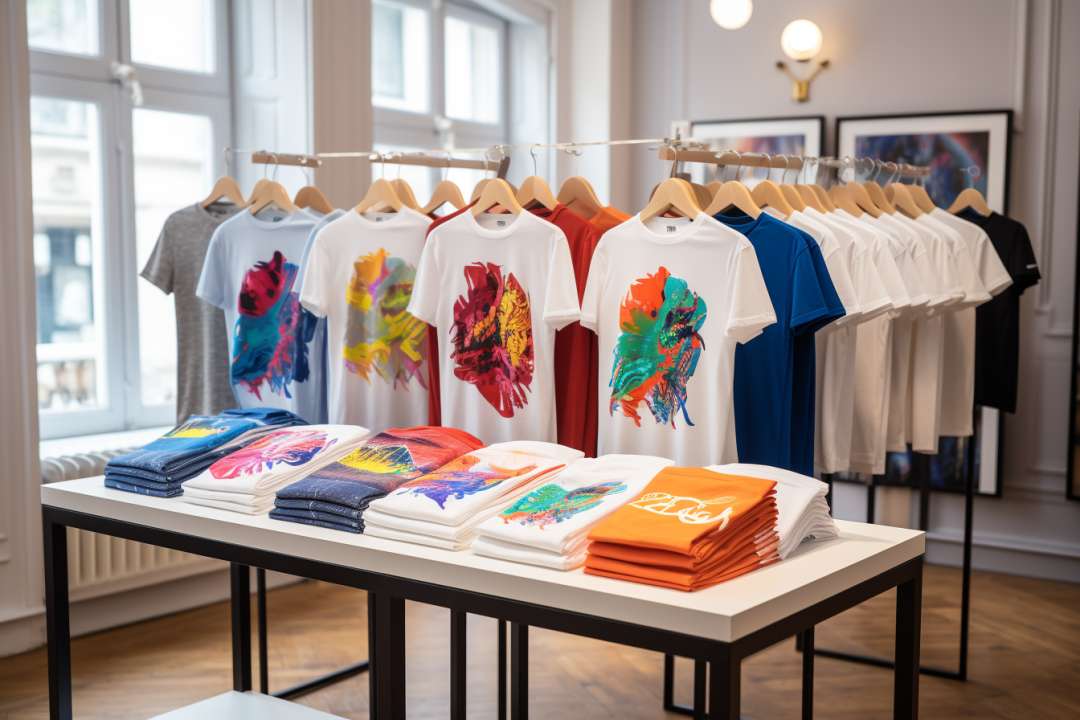Heat Transfer Vinyl Printing: Transform Your T-Shirt Game Today
Heat Transfer Vinyl Printing: Transform Your T-Shirt Game Today
Blog Article
The Rise of DTF Printing: Exploring Its Applications and benefits
The development of Straight to Film (DTF) printing innovation is transforming the custom-made garments sector, giving significant advantages and a broad range of applications. As the appetite for custom items continues to increase, comprehending exactly how DTF printing can satisfy these advancing requirements is progressively essential.

Comprehending DTF Printing Modern Technology
Recognizing DTF Printing Modern technology marks a significant advancement in the textile printing sector, particularly for its adaptability and efficiency. Direct-to-Film (DTF) printing is a sophisticated process that includes printing designs onto special transfer movies, which are after that transferred onto fabric utilizing warmth and pressure. Unlike conventional approaches, DTF printing does not call for pre-treatment of the fabric, allowing a much more structured workflow.

Once cured, the movie is positioned onto the material, and a warm press transfers the style by applying consistent heat and stress. This causes lively, top notch prints that stick effortlessly to different material types, including cotton, polyester, and blends (DTF printing). The innovation's capability to generate detailed and brilliant designs with marginal configuration makes it a game-changer in the textile printing arena
Trick Benefits of DTF Printing
One of the vital benefits of DTF printing is its extraordinary versatility, which allows for high-quality prints on a vast array of fabric kinds. This ability extends past conventional cotton to consist of polyester, nylon, natural leather, and even blended materials, making it optimal for varied textile applications. This flexibility minimizes the need for several printing technologies, enhancing manufacturing procedures and minimizing overall prices.
One more considerable advantage is the exceptional print quality that DTF modern technology provides. By employing vivid, long lasting inks and exact application techniques, DTF prints preserve their shade fidelity and sharpness also after numerous laundries. This causes an item that not only looks expert yet also stands the test of time, supplying regular value to both end-users and suppliers.
Furthermore, DTF printing uses a streamlined workflow, which can result in boosted performance and performance. Unlike traditional methods such as screen printing, DTF does not need complex setup or substantial drying out times. This ease of use makes it an attractive choice for services of all dimensions, enabling quicker turnaround times and the ability to deal with little to big manufacturing runs with minimal problem.
Applications in Custom Apparel
In the realm of custom apparel, DTF printing stands out as a game-changing technology that enables designers and manufacturers to produce bespoke garments with exceptional detail and high quality. Direct-to-film (DTF) printing has actually changed the personalized garments market by using flexibility in design, dazzling color reproduction, and sturdiness. This innovative method permits complex layouts to be moved onto a vast array of textiles without endangering the stability of the material.
One significant application of DTF printing remains in developing customized t-shirts, hoodies, and sports apparel. The capability to print complicated graphics with fine information and gradients makes it ideal for individualized clothes, such as team uniforms and marketing merchandise. In addition, DTF printing is especially beneficial for limited-run orders and one-off items, offering a efficient and economical remedy contrasted to conventional display printing techniques.
Additionally, DTF printing has actually opened up new avenues for style designers to explore unique patterns and textures, making it possible for the development of cutting-edge, avant-garde collections. This innovation additionally supports small companies and independent artists by minimizing the obstacles to entry in the customized clothing market. Inevitably, DTF printing is improving the landscape of customized clothing, combining artistic expression with technical innovation.
Flexibility Across Different Products
Building on the developments in custom-made clothing, DTF printing's flexibility throughout various materials even more improves its appeal. Unlike conventional printing methods, DTF (Direct-to-Film) printing can be related to a substantial series of substratums, consisting of cotton, polyester, blends, natural leather, and also hard surface areas like wood and glass. This flexibility is achieved with the special procedure where layouts are printed onto a special film and afterwards moved onto the product using a heat press. This enables dynamic, high-quality prints that preserve their integrity throughout various structures and structures.
The ability to print on diverse products opens up many possibilities for organizations throughout various sectors. In the promotional products field, firms can personalize a wide variety of items, from carry bags and caps to mugs and phone instances, all with the same printing innovation. In the style sector, DTF printing allows developers to experiment with complex patterns and dynamic colors on unusual materials, pressing the borders of creativity.
Moreover, DTF printing's compatibility with different products additionally converts to cost-efficiency and reduced waste, as makers can utilize the very same equipment for multiple applications. This versatility not just expands the scope of item offerings yet likewise improves operational performance.
Future Prospects of DTF Printing
As the marketplace evolves, the future prospects of DTF printing are poised to transform various industries through continual development and technological advancements. The rise sought after for personalized clothing and marketing products is driving the need for much more reliable, flexible, and affordable printing methods. DTF printing, with its webpage capability to generate high-grade, durable prints on a variety of materials, stands at the leading edge of this change.
Emerging trends show that DTF printing will significantly incorporate with automation and AI modern technologies, enhancing manufacturing speed and reducing labor costs. Advanced software services will further maximize layout accuracy, color matching, and print uniformity, addressing a few of the existing constraints. In addition, eco-friendly inks and recyclable transfer films are anticipated to gain grip, straightening with worldwide sustainability objectives.
Industries past textiles are likewise discovering the potential of DTF printing. The technology's adaptability makes it suitable for applications in home design, vehicle interiors, and even medical gadgets. As r & d initiatives remain to expand, the range of DTF printing will likely broaden, opening up brand-new methods for industrial and innovative applications. In recap, the future of DTF printing is intense, promising considerable advancements and broader industry fostering.
Conclusion

Comprehending DTF Printing Modern technology notes a websites considerable innovation in the fabric printing industry, particularly for its versatility and efficiency. Direct-to-Film (DTF) printing is an innovative procedure that includes printing layouts onto special look at this web-site transfer films, which are then transferred onto fabric utilizing warm and stress. DTF printing is particularly advantageous for one-off items and limited-run orders, giving a economical and reliable solution compared to traditional display printing approaches.
Unlike traditional printing methods, DTF (Direct-to-Film) printing can be used to an extensive range of substratums, consisting of cotton, polyester, blends, leather, and even tough surfaces like timber and glass.DTF printing modern technology is changing the custom clothing sector by supplying effective, affordable, and versatile services for generating vivid layouts on numerous textiles without pre-treatment.
Report this page